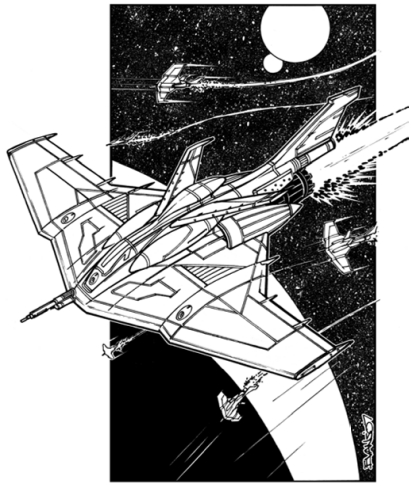Campaign Against the Taurian Concordat
At the outset of the Reunification War the SLDF focused its efforts on the Taurian Concordat, the strongest and most advanced of the Periphery states. With assistance provided by the
AFFS, SLDF Corps I, III, IV and VI were tasked with the pacification of the
Hyades Cluster. The day after receiving the
Pollux Proclamation, Protector
Mitchell Calderon placed the
TDF on high alert, and all Taurian defense industries increased production. With hostile forces massing on the Taurian border, the Concordat Defense Board devised the defensive strategy
Case Amber, in
2576.
[edit] Taurian Tactics
Faced with overwhelming odds, the Taurian Concordat fought the invaders through a combination of regular and irregular tactics. Irregular tactics on planet surfaces included (but were not limited to) scorched earth defenses; surprise attacks (even concealed on open ground); insurgency bombings; mass poisonings; assassinations; passive resistance demonstrations; and herding placing BattleMechs and combat vehicles through strategic placement of unarmed civilians, in preparation for saturation artillery shelling.
In space combat, guerrilla tactics were even more extreme. Within
Flannagan's Nebula, the large debris field was laced with laser batteries; each laser battery required clearance by infantry in zero gravity -
BattleMechs,
Aerospace Fighters, and naval assets were useless within the debris fields of Flannagan's Nebula. Soldiers clad in environmental suits from abandoned ships would float in the void to nearby hostile ships, and, in tandem with kamikaze attacks, would penetrate the hull and commandeer the ship. The Taurian navy also used "fire ships", ships packed with explosives, to deliver devastating kamikaze attacks.
[edit] Case Amber
In
2577, the TDF implemented "
Case Amber". On the eve of the invasion, the AFFS fleet and invasion force assembled in the
As Samik and
Naka Pabni systems. Taurian ships garrisoning nearby systems started to depart, and radio communications traffic suggested these departures were intended to bolster a reserve fleet. Convinced that no such fleet existed, Admiral
Sarah Vincent split her forces and engaged a small Taurian fleet in the
Tentativa system. In her absence, a massive Taurian force jumped into the
Panpour system, destroying the AFFS rear armada. When word reached Admiral Vincent of the sneak attack, Vincent ordered her ships to withdraw. On route to the Jump point, a second Taurian fleet emerged from hiding in the system and ravaged the
Federated Suns assault group. By the conclusion of Case Amber, the AFFS had lost more than twenty-four warships/jumpships, while the TDF had lost only three. Though the ground forces of the AFFS remained unscathed, they were effectively stranded due to lack of transportation.
[edit] Wexworth's Invasion
Early in
2578, the SLDF, commanded by General
Charles Mainstein Wexworth, commenced its invasion of the Taurian Concordat. Wexworth conducted a cautious advance through Taurian territory, for several reasons:
- the Star League wanted the Concordat's industry left intact
- minimizing casualties
- the TDF had demonstrated its prowess through the immobilization of the AFFS
- Wexworth desired victory to advance his social standing in the Terran court
Wave one involved the simultaneous invasions of Taurian systems. All told, the naval engagements cost the SLDF three ships and the TDF four vessels.
- I Corps advanced into Ridgebrook, but was stalled; the 2nd and 15th Taurian Fortress Battalions held Ridgebrook for 4 months. The Corps then moved to the Wrentham system, where the 7th and 12th Regulars took heavy casualties.
- III Corps advanced into the agricultural world of Keuterville, and was defeated on the open plains.
Wave two began in
2580. Naval engagements result in the destruction of fifteen Star League and thirteen Taurian ships.
Wave three occurred in
2581. Wave three witnessed the two largest naval engagements of the Reunification War. In total, the Star League navy lost around 50 vessels ships (~33%), but the remainder of the Taurian navy (~100 ships) was either destroyed or forced to return home for repairs. The remnants of the Taurian navy required three years to recover from the third wave.
- I Corps landed in the northern industrial centers of the planet Flintoft, only to be bombed by conventional aircraft.
- III Corps assaulted Robsart. Before landing on the surface, the SL navy suffered heavy casualties. In retaliation, Admiral Janissa Franklin ordered an orbital bombardment, killing 30,000 civilians. The Robsart Bombardment became a rallying cry for the TDF throughout the remainder of the war.
- IV Corps advanced on Brusett, where the 16th and 19th Tamara Regulars were decimated by poison dust.
- AFFS advanced on the agricultural world of Weippe, and industrial world of Pierce. On Weippe, food stores were torched before they could be captured by the AFFS. On Pierce, the 107th Light Cavalry took heavy casualties after insurgents set off demolitions in the capital.
- Deifenbaker was taken in the only infantry-infantry engagement in the entire war. The Corigan "hills", overlooking the capital, were too rugged for 'Mech combat. The 88th Light Horse took the hills, suffering over 5,000 casualties in the process.
[edit] Case Black
Unpleased with General Wexworth's lack of progress in the
Hyades Cluster, and appalled by the number of casualties, the SLDF High Command recalled IV and VI Corps, and replaced Wexworth with General
Amalthia Kincaid. Gravely injured early in her career, Kincaid was an "armchair MechWarrior" with cunning strategic skills, and demonstrated her competence with a successful completion of
wave four in
2582. During the fourth wave, the SLDF conquered
Horsham with little collateral damage and living prisoners taken, while the recently created XI Corps took
Bromhead and
Rollis.
In repsonse, Taurian Defense Command commenced "
Case Black", a two-pronged strategy to stop the SLDF. The remnants of the Taurian navy engaged the Third Star League Fleet under Admiral
Kristopher Minn. Drawing the fleet as far as
Cohagen, Taurian commandos then infiltrated League-occupied space, and assassinated General Kincaid on the planet
Firgrove on 3 June,
2583.
With General Kincaid dead, and fearful of the new "miracle weapon" used by the Taurian commandos, the SLDF floundered for more than a year before recommencing the Taurian invasion.
[edit] Total War
Kincaid was eventually replaced by General
Amos Forlough, veteran of the ongoing war with the
Outworlds Alliance. Forlough was unscrupulous, resolving to conduct a scorched-earth campaign against the Concordat. However, he failed to inform his superiors of his tactics (or, for that matter, any losses or atrocities committed). Discipline and defection became significant problems under the leadership of General Forlough; the SLDF instituted severe corporal punishments for any infractions committed against orders.
Forlough commenced
wave five in
2584, favoring scorched-earth tactics against his adversaries.
Caldwell and
Warren quickly fell to the SLDF; all attempts to relieve the beleaguered worlds were thwarted by the Star League navy.
In order to prevent the complete destruction of the Concordat,
Mitchell Calderon ordered his House regiments, thus far held in reserve, to bring war to the Star League. the
Taurian Guard, the
Concordat Velites and the
Calderon Red Hand were deployed to
Deifenbaker to destroy III Corps. Though most of the Taurian units were lost, III Corps was decimated, and unable to continue the invasion.
As Taurian resistance faded, Forlough pressed his advantage.
Wave six occurred in
2585-
2586.
- I Corps took Lindsay
- IV Corps took Carmichael
- the AFFS conducted a scorched earth campaigns against Montour, Sartu, and Mavegh. Attempting to relieve the planet Montour, the remaining Taurian fleet was trapped and destroyed by the Star League Fourth Fleet.
Wave seven (
2587) was even more successful for the Star League, conquering
Warren and the surrounding systems without resistance.
Early in
2588,
Mitchell Calderon died of a heart attack. His daughter,
Marantha Calderon, decided to withdraw all remaining Concordat forces into the
Hyades Cluster and
Flannagan's Nebula, and prepare for one last stand. The withdrawal of the TDF left
New Vandenburg alone with a garrison of 5 regiments.
Seizing the opportunity, General Forlough assaulted New Vandenburg (
2588-
2589). I Corps landed on the planet uncontested, and proceeded to defoliate the northern continent. Unwilling to be drawn out, the Taurian garrison maintained its position in the city of Harmony near the defense industries. Frustrated, Forlough ordered I Corps to take Harmony by force. I Corps was met by an irregular mix of anti-BattleMech trained infantry, conventional vehicles and aircraft - and chemical weapons. Though ultimately successful, the SLDF required many months eliminating pockets of resistance from caves and tunnels throughout the planet, and took heavy casualties. Shortly after completion of the conquest of New Vandenburg, Director-General
Ian Cameron removed the recently promoted Field Marshal Forlough from command, as he had destroyed too much of the Concordat's valuable industry.
[edit] The Final Waves
General Lord
Damien Onaga replaced Field Marshall Forlough, and commenced
Wave Eight in
2590. With virtually no resistance,
Desolate Plains,
Brockway and
Midale fell to the Star League juggernaut. All that remained was penetrating
Flannagan's Nebula, the asteroid field, and bringing war to the
Hyades Cluster.
In order to accomplish this task, Lord Onaga deployed the elite Star Guard Corps in
Wave Nine in
2591. The Star Guard was tasked with clearing Flannagan's Nebula. Fighting within the nebula was drawn out and brutal, with the SLDF requiring four full years to clear the Taurian defences. Asteroid laser emplacements were removed by zero-gravity infantry operations, as the debris was too dense for BattleMechs, Aerospace fighters, or capital ships.
With the SLDF poised for a final invasion of the
Hyades Cluster, Protector
Marantha Calderon surrendered rather than see the Hyades Cluster razed. The
Taurian Defense Force and all irregular resistance lowered their arms on 22 September,
2596, after a simultaneous radio broadcast was transmitted throughout all worlds currently or previous held by the
Taurian Concordat. The next morning, Protector Marantha committed suicide. Her remains were cremated, and her ashes scattered in space.


 This topic is locked
This topic is locked






























